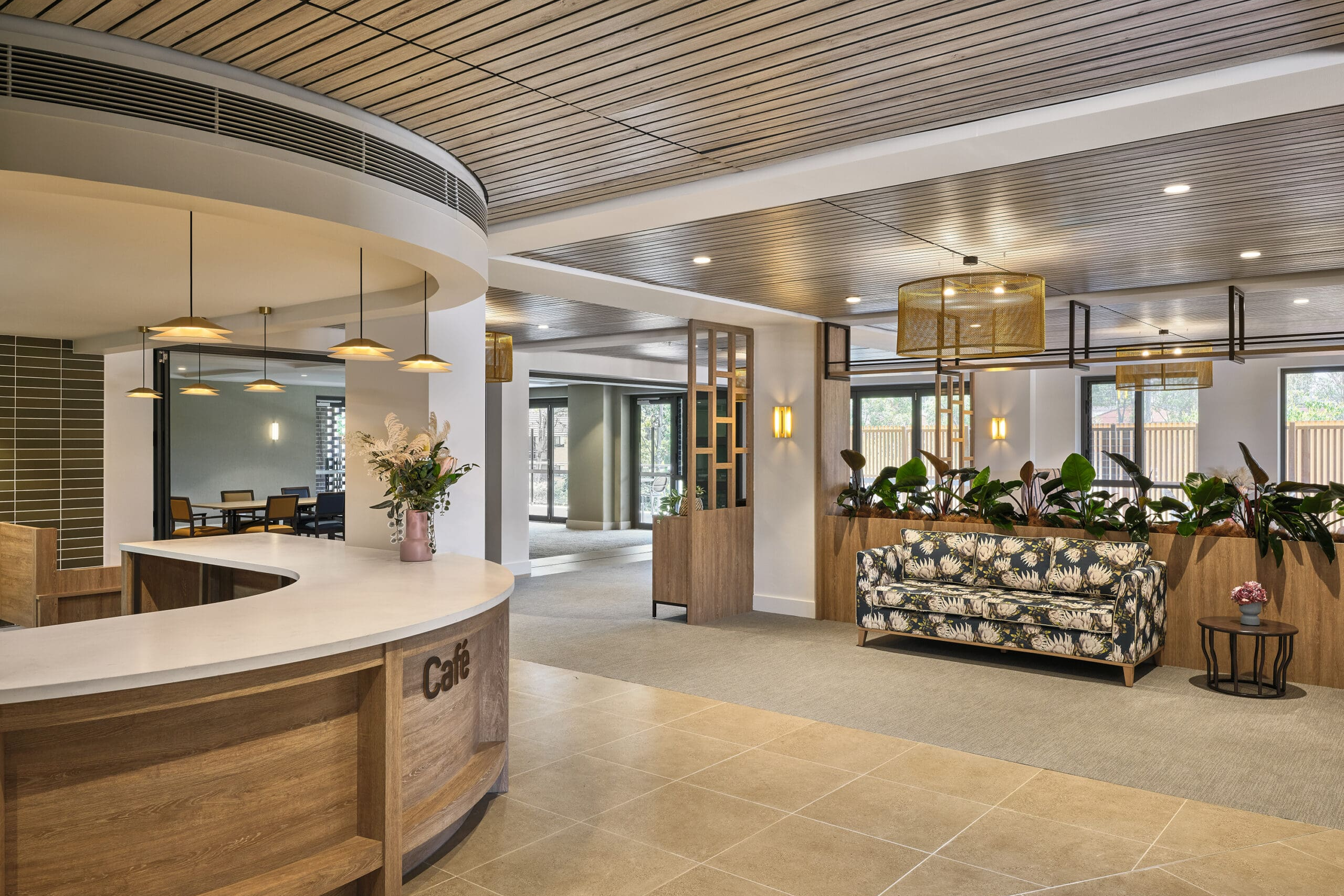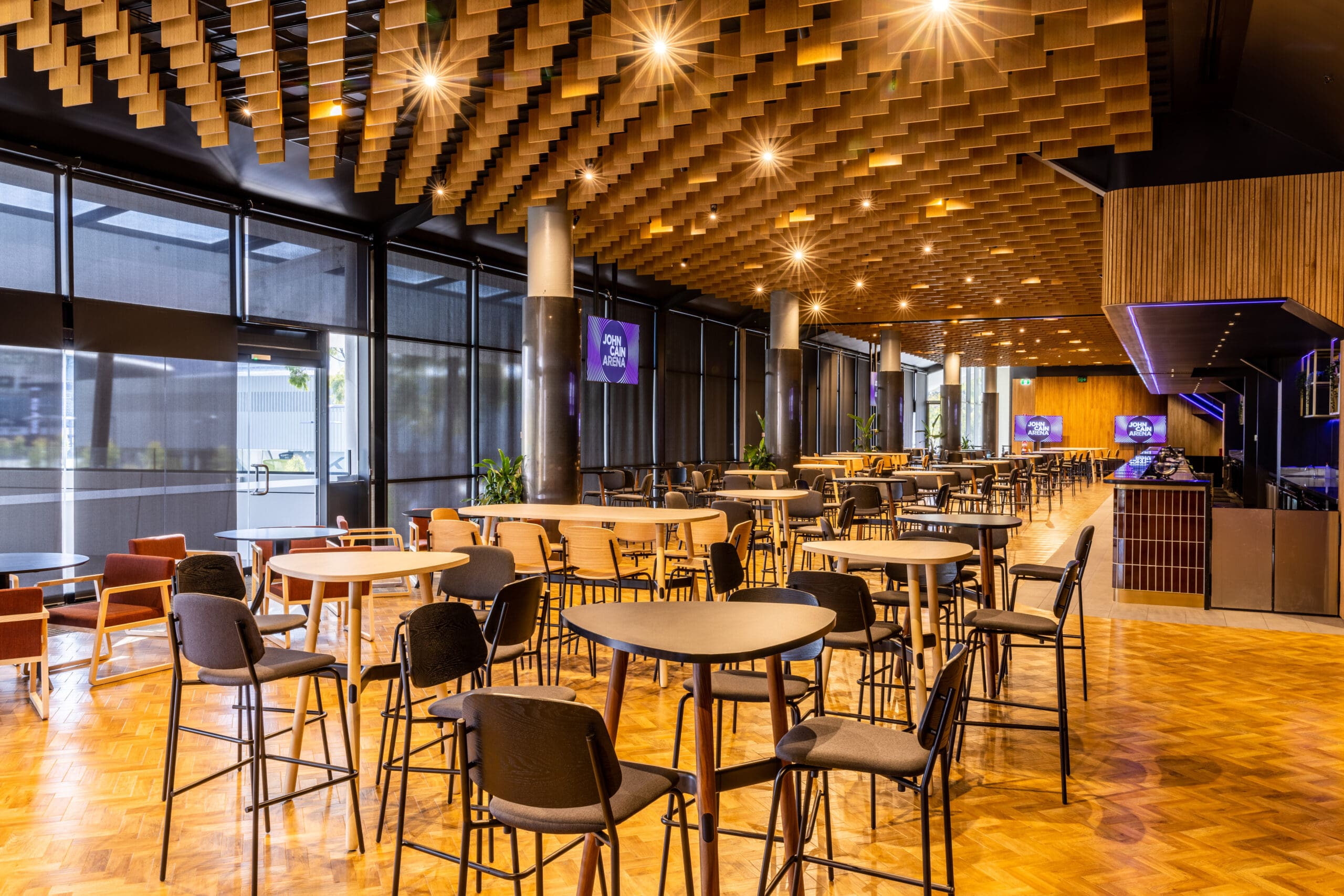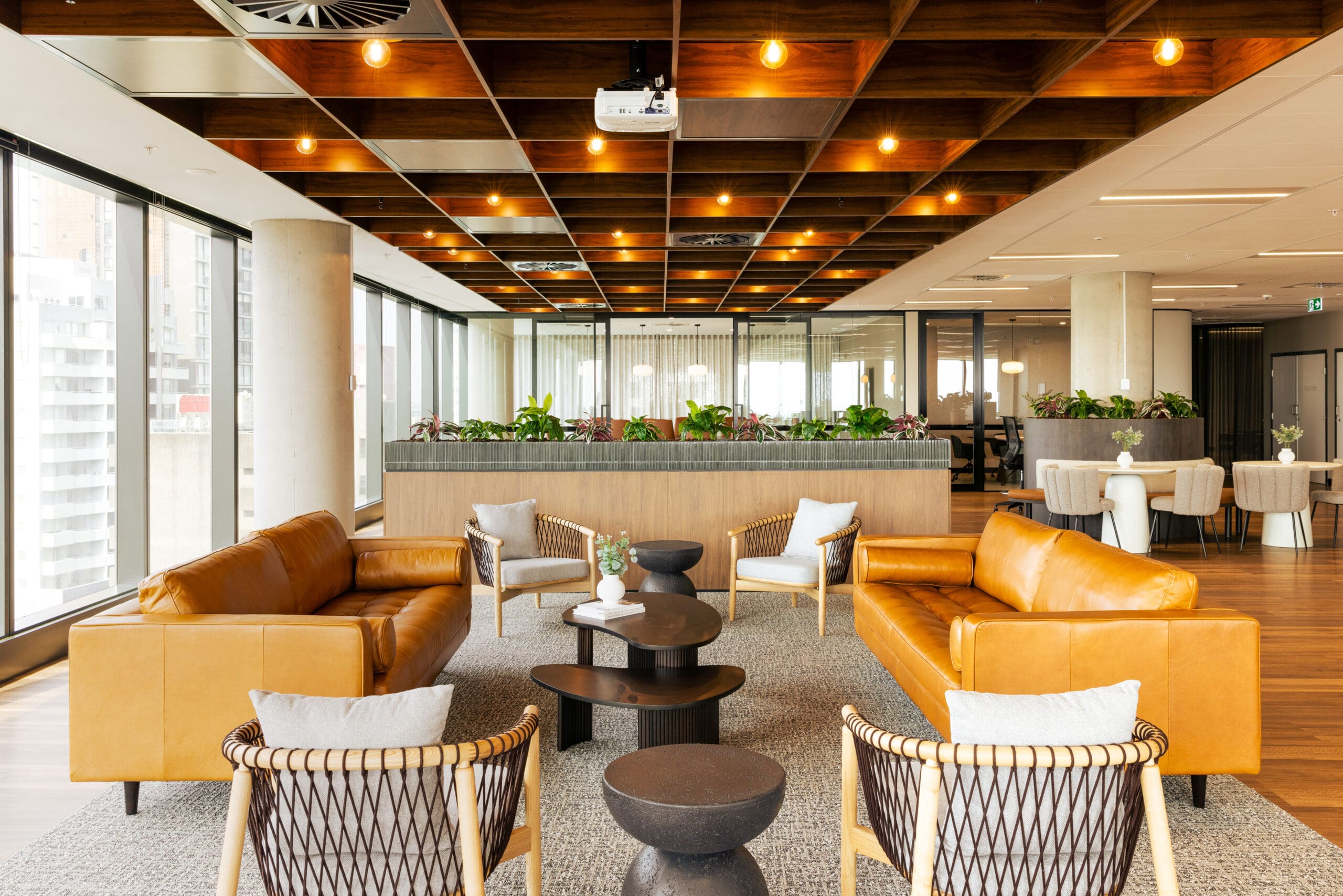Transcription of blog video content.
Natural Timber Veneer has some advantages that cannot be achieved with artificial surfaces such as laminates, no matter how realistic they may be. What we especially enjoy about veneer is the depth of the warmth and the way it reflects the light. But being a natural product, that does create some challenges.
The first is colour consistency. Some species of veneers such as Hoop Pine, and American Oak, are reasonably consistent in colour. But others like Australian Eucalypt, including species such as Blackbutt or Spotted Gum, have a significant amount of colour variation across them.
Unlike solid timber, where every single stick will vary in colour, with natural veneer, because of the way it works is the log is sliced into slices called ‘leaves’, which are then joined together.
Within a single log, there can be quite a lot of consistency of colour. But when you go from one log to another, there can be a significant variation, which then means if you have a very large space to cover, you can have patches of different colours.
The way we recommend overcoming this challenge where we have a large space, is to employ random matching. That means taking all the colours of veneer that you'd need to do the entire project and mixing it up across every single panel.
There are two options to achieve the best result. You can meet with us on large project and select the veneer leaves to ensure that there's not anything that's too light, too dark or extreme.
Alternatively, we can do that with a sample. We'll put together a sample that shows the range of possible colours. And we can exclude anything that you feel is outside of what's acceptable.
It is important to select at least 50% or more than the amount of veneer that you expect to need, to allow for any unexpected wastage - extras for doors, and so on.

Another cause of variation is the way that light reflects. Because of the way the veneer is sliced, the grains will be traveling in one direction or another, and that changes the way the light reflects. As an example of this, we looked at a panel in the factory that was lying on the table. It appeared as though every second leaf across that panel was much lighter than the other. But when I went to the other side of the panel, every leaf that looked light before, now looked dark, and vice versa; because of the way they were reflecting light.
The standard way of slicing veneer where every leaf comes out the same is to ‘book match’ them. What this means is that one leaf is laid with the grain going upward, the next leaf is then flipped over so that the grain is going downwards which will create a very different way of reflecting the light. In these circumstances it may be better on certain species to ‘slip match’ them, which means that when the leaves come off the tree, they are all laid the same way so that the grains move in one single direction.

Another aspect of veneers is that they change colour over time. This is especially accentuated with species of very light colours like Hoop Pine and some dark colours such as American Walnut. Where they are exposed to a lot of UV light, for example, a wall facing a large open window, or even certain LED lights with unique components; this will accelerate the aging process. The aging process will happen even in the absence of light, but it is accelerated in sunlight. We’ve had situations where replacement panels were required or, where the last panel couldn't be installed because the wall that it needed to be butted up against hadn't yet been built. In the latter case, they put that panel into storage, and when they brought that panel out to install, it was significantly different in colour because all the others had darkened. In these circumstances, we recommend installing the panel and waiting about six months because over time it tends to darken rapidly in the beginning, and then more slowly later on. So after about six months, the difference will be negligible. Do not try and stain a replacement panel to match all the panels because that means the stained panel will then become significantly darker or even a different colour over time.
This aging effect is separate and additional to any darkening of the clear finish that's been used, so we recommend using a non-yellowing clear finish. And you can also get clear finishes with UV inhibitors to reduce the impact of UV light on the clear finish itself.
[email protected] | our toll-free: 1800 002 123
Disclaimer: All the information on this website - www.supawood.com.au - is published in good faith and for general information purpose only. Supawood does not make any warranties about the completeness, reliability, and accuracy of this information. Any action you take upon the information you find on this website (Supawood), is strictly at your own risk. Supawood will not be liable for any losses and/or damages in connection with the use of our website.
From our website, you can visit other websites by following hyperlinks to such external sites. While we strive to provide only quality links to useful and ethical websites, we have no control over the content and nature of these sites. These links to other websites do not imply a recommendation for all the content found on these sites. Site owners and content may change without notice and may occur before we have the opportunity to remove a link that may have failed.
Consent: By using our website, you hereby consent to our disclaimer and agree to its terms.



